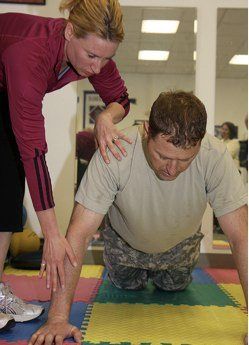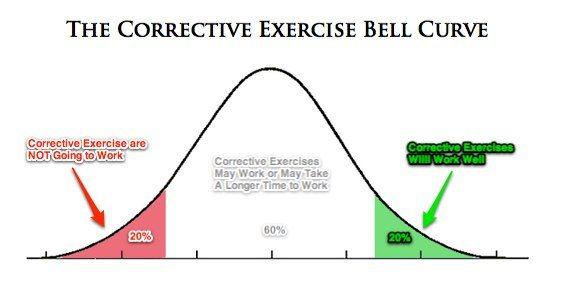There is a simple quote from Don Meyer, winningest basketball coach in NCAA history, that is often an overlooked art of coaching no matter what field we’re considering:
[quote]“The more they think, the slower their feet get.”[/quote]
Even in something like jazz piano, I can attest that the best way to screw up your improvisation is by thinking about where your fingers are and how they’re moving! By no means am I an expert on cueing (or jazz piano for that matter…mediocre at best), but the more we look toward the emerging research on the “art” of cueing, the better chances our athletes have to succeed.
External and Internal Cueing

“Too much” is relative and depends on your goal at the time. There may be instances where you can trade thinking (and a slower, possibly less powerful movement) for better mechanics. In the weight room, if a pattern is faulty, there is an advantage to breaking it down and getting the athlete to realize their movement dysfunction. Here we are going from unconscious incompetence to conscious incompetence. The next step as they are correcting the movement (conscious competence) is then followed by unconscious competence- or in other words performing the movement correctly without thinking.
Even for slow, near-maximal strength movements, I like to think that unconscious competence is the ultimate goal. While it can be beneficial and necessary to remind athletes of a few cues here and there, ideally by the time they’re exhibiting max force on a heavy load, they have these movement patterns down and we are only fine tuning things. This would mean a better carry-over into functional performance as well, because when athletes are practicing, moving, picking heavy things up off the floor (moving into their dorm rooms, etc.), they won’t be thinking about their form, nor would we want them to be.
The Trouble with Language
Unfortunately, when telling a group of 20 some individuals a particular coaching cue, it seems like half of them will take it to mean something different than what you want. And that’s OK…it’s just inefficient. You then have to start your alert, fast-paced walk around the weight room, as everyone breaks off, catching a few athletes just in time who are doing the movement incorrectly while others perform it incorrectly until you get to them!
Coaches who can demonstrate well while explaining are golden for the athletes, since athletes may not be the best listeners, but usually have good bodily-kinesthetic intelligence and awareness (thanks to genius psychologist Howard Gardner’s theory of multiple intelligences). Additionally, they say a picture is worth a thousand words, so is a video worth tens of thousands? One idea that I would like to implement in the near future is to take video during our important sets. I recall seeing video of my baseball swing in college and noticing a few things immediately that I had not previously realized. I know it has been done before in the weight room, but it’s obviously not commonplace yet. Just having one of our other assistants walk around and film the athletes would be beneficial for anyone who may be struggling with a movement pattern.
Unconscious Competence
As your athletes move toward unconscious competence (e.g. the movement is becoming second nature), external cueing, or minimal thinking, appears to be best, again given your goals. This is the time to say “jump up and reach the top of the vertec” (you’re getting them to focus on something outside of their body), as opposed to “hinge at your hips with some knee flexion and quickly extend as fast as possible to exert maximal force!” Unless, of course, your goal is to just drop knowledge bombs on them…
Focusing the attention to something else will always be an external cue, and again the research is becoming pretty clear that this is better for performance than internal cues. “Put force into the ground” is another common external cue for using the posterior chain while sprinting, and the good thing about weights and medicine ball plyometrics is that you can direct athletes’ attention to those objects as well.
“Put as much force into the bar as possible” as they’re getting ready to pull, or “move the weight from point A to point B as quick as you can.”
“Throw the medicine through the wall- try to break it!”
Obviously internal cues- focusing the attention in the body- have their place, and do have an important role when an athlete is in a learning phase (which is very often in my training programs for spring sport since I’ll start every athlete from square one in the fall). However even with internal cueing, because of the different interpretations that each athlete may hear, I try to stick to the one main cue that each individual needs the most at that time. If they approach the bar and have a bit of lumbar flexion I’ll get them into a neutral spine and work on one thing during that set. Additionally, while we may think we’re all great coaches, nothing beats an “artificial coach” at explaining things without language. In this example, raising the plates off the ground (so it’s easy for them to straighten their back), or putting them near a wall where they have to reach their hips back and touch the wall with their butt before starting the pull. Eventually, if I have to remind them, I want to just say “neutral spine” to this athlete without saying anything else and have them recall what that means. Then down the road I want to say “put as much force into the bar as possible and move it up as fast as you can!”
Conclusion
When I first started coaching athletes on my own as a graduate assistant, I was spitting out cues left and right- “hips back, chin packed, foot flat on the ground/back on heels, back straight…” I now think about how confusing that must have been for the athletes! Just like any other skill in life, they need to figure it out on their own, with our help where we can offer it. Also, if you work with athletes, don’t forget about the importance of being a great demonstrator. If you have to, check yourself out in the mirror (not bodybuilder style though!) to make sure you look how you want to come across. And if you’re not a great demonstrator on an exercise (hey, many great/knowledgeable coaches aren’t), find an athlete on your squad who is, and explain as they demonstrate.
About the Author

In Travis’ first year training solely the NSU women’s fast pitch squad, two players had reached a maximum deadlift of 295 lbs. with the team average jumping from 203 lbs. to 239 lbs. Additionally, the team’s vertical jump had increased from an average of 17.5″ to 19.5″ in just a few months with one athlete hitting 26″. The increased strength, speed, and power had shown on the field, with Northern State breaking several school records including wins, stolen bases, hits, doubles and RBI, and experiencing zero major injuries in the process. As a former two-sport collegiate athlete, Travis understands the motivations of athletes and embraces their effort toward healthy and winning habits. This year, Travis looks to increase his individualized nutrition coaching while continuing to help Northern State Softball improve both on and off the field.
Travis has a website at NSUsoftballtraining.wordpress.com
References
- Marchant, D.C., Greig, M., Bullough, J., & Hitchen, D. (2009). Instructions to adopt an external focus enhance muscular endurance [Electronic version]. Research Quarterly for Exercise & Sport, 82(3), 466-473.
- Schücker, L., Hagemann, N., Strauss, B., & Völker, K. (2009). The effect of attentional focus on running economy [Electronic version]. Journal of Sports Sciences, 12, 1241-1248.
- Freudenheim, A., Wulf, G., Madureira, F., Pasetto, S., & Correa, U. (2010). An external focus of attention results in greater swimming speed [Electronic version]. International Journal of Sports Science and Coaching, 5, 533-542.
[hr]





